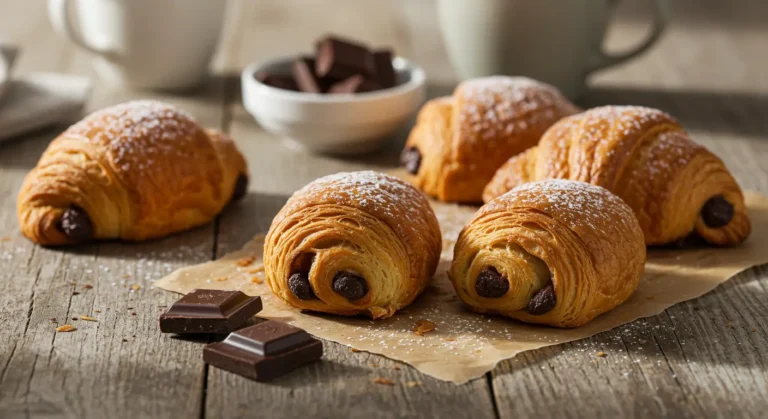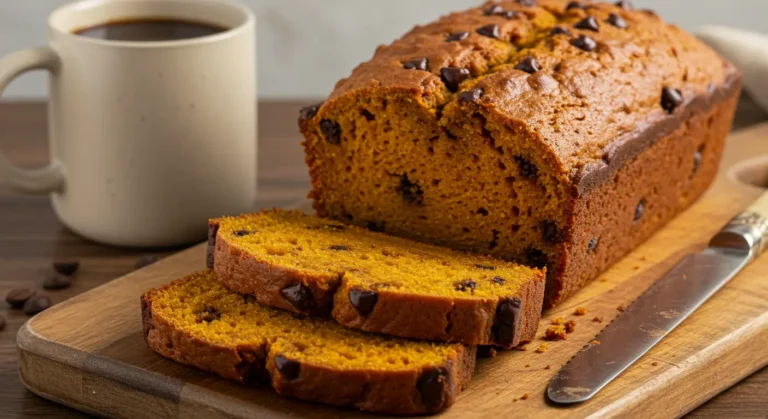Vanilla French Beignets Made Simple and Delicious
What makes a simple piece of dough transform into golden, pillowy clouds of pure indulgence that have been captivating taste buds across New Orleans and beyond for generations? The answer lies in the magical alchemy of vanilla French beignets, those heavenly squares of fried dough that represent far more than just a sweet treat. These delectable pastries, with their crispy exterior and tender interior, carry within them centuries of culinary tradition that began in France and found their perfect home in Louisiana’s vibrant food culture.
Table of Contents
Ingredients List
For this vanilla French beignets recipe, you’ll need a carefully curated selection of ingredients that work harmoniously to create that perfect texture and flavor profile. Each component plays a crucial role in achieving the authentic taste and consistency that makes these pastries so beloved.
- 1 cup warm water (110°F/43°C)
- 1 packet (2¼ teaspoons) active dry yeast
- ½ cup granulated sugar
- 1 teaspoon salt
- 2 large eggs, beaten
- 1 cup evaporated milk
- 7 cups all-purpose flour
- ¼ cup melted butter
- 2 teaspoons pure vanilla extract
- Vegetable oil for deep frying (about 8 cups)
- Powdered sugar for dusting
Timing
This vanilla French beignets recipe requires strategic timing to achieve optimal results, with most of the time dedicated to allowing the dough to develop its characteristic texture and flavor.
- Preparation Time: 20 minutes
- Rising Time: 2 hours for first rise, plus 45 minutes for second rise
- Cooking Time: 15-20 minutes
- Total Time: Approximately 3 hours and 30 minutes from start to finish
Step-by-Step Instructions
Step 1: Activate the Yeast Foundation
Begin by combining warm water with active dry yeast in a large mixing bowl, whisking gently to dissolve completely. The water temperature is crucial here – too hot will kill the yeast, while too cold won’t activate it properly. Sprinkle in 1 tablespoon of the granulated sugar to feed the yeast, then let this mixture rest for 5-8 minutes until it becomes foamy and aromatic. This foaming action indicates that your yeast is alive and ready to create those beautiful air pockets that give beignets their signature lightness.
Step 2: Build the Flavor Base
Once your yeast is activated and bubbly, whisk in the remaining sugar, salt, beaten eggs, evaporated milk, melted butter, and vanilla extract until the mixture is smooth and well-combined. The vanilla extract should be added at this stage to ensure it distributes evenly throughout the dough, infusing every bite with that distinctive flavor that makes these French pastries so memorable.
Step 3: Form the Perfect Dough
Gradually incorporate the flour, starting with 4 cups and mixing with a wooden spoon or dough hook if using a stand mixer. Continue adding flour gradually until the dough pulls away from the sides of the bowl but remains slightly sticky to the touch. This texture is essential – too much flour will result in dense, heavy beignets rather than the light, airy texture we’re seeking.
Step 4: Master the First Rise
Transfer your dough to a well-oiled bowl, turning it once to coat all surfaces with oil. Cover tightly with plastic wrap or a damp kitchen towel and place in a warm, draft-free location for about 2 hours, or until doubled in size. This extended rise develops the complex flavors and creates the gluten structure necessary for proper texture.
Step 5: Shape with Precision
After the first rise, gently punch down the dough and turn it out onto a lightly floured surface. Roll the dough into a rectangle approximately ½ inch thick, using even pressure to maintain consistent thickness throughout. Cut into 3-inch squares using a sharp knife or pizza cutter, ensuring clean cuts that won’t seal the edges and prevent proper puffing during frying.
Step 6: Allow the Second Rise
Place cut squares on parchment-lined baking sheets, leaving space between each piece for expansion. Cover lightly with kitchen towels and let rise for an additional 45 minutes until noticeably puffed. This second rise is crucial for achieving that perfect balance between crispy exterior and fluffy interior.
Step 7: Perfect the Frying Technique
Heat vegetable oil in a heavy-bottomed pot or deep fryer to 360°F (182°C). The oil temperature is critical – too low and the beignets will absorb oil and become greasy, too high and they’ll brown before cooking through. Fry 3-4 squares at a time, avoiding overcrowding which can lower oil temperature. Cook for 1-2 minutes per side until golden brown and puffed, using a slotted spoon to turn them gently.
Step 8: Finish with Classic Elegance
Remove fried beignets to paper towel-lined plates to drain briefly, then transfer to serving plates while still warm. Generously dust with powdered sugar using a fine-mesh sieve, ensuring even coverage. The contrast between the warm pastry and cool powdered sugar creates that perfect first bite experience that defines authentic vanilla French beignets.
Nutritional Information
For a serving of this vanilla French beignets recipe (2 medium beignets), you’ll find a balanced combination of carbohydrates, fats, and proteins that reflects their indulgent nature while providing sustained energy for morning activities.
- Calories: 285 per serving
- Total Fat: 12 g
- Saturated Fat: 3.5 g
- Trans Fat: 0 g
- Cholesterol: 35 mg
- Sodium: 195 mg
- Total Carbohydrates: 41 g
- Dietary Fiber: 1.5 g
- Total Sugars: 12 g
- Added Sugars: 8 g
- Protein: 6 g
- Vitamin A: 4% Daily Value
- Calcium: 8% Daily Value
- Iron: 12% Daily Value
Healthier Alternatives for the Recipe
Transform your vanilla French beignets into a healthier version with these modifications that maintain the beloved texture and flavor while enhancing nutritional benefits for health-conscious food lovers.
- Whole Wheat Flour Substitution: Replace up to half the all-purpose flour with whole wheat pastry flour to increase fiber content and add nutty complexity
- Reduced Sugar Option: Decrease granulated sugar to ⅓ cup and compensate with additional vanilla extract or a touch of stevia extract
- Air Fryer Method: Cook shaped beignets in an air fryer at 375°F for 8-10 minutes, lightly brushing with oil for crispy results with less fat
- Coconut Oil Alternative: Use coconut oil for frying, which provides medium-chain triglycerides and a subtle tropical note
- Greek Yogurt Enhancement: Replace half the evaporated milk with plain Greek yogurt for added protein and probiotics
- Natural Sweetener Dusting: Mix powdered erythritol with regular powdered sugar for reduced calories in the finishing dust
Serving Suggestions
Elevate your vanilla French beignets experience with these ideas that transform a simple pastry into an memorable culinary moment suitable for any occasion.
- Serve alongside rich café au lait or chicory coffee for an authentic New Orleans breakfast experience that balances sweetness with bold coffee flavors
- Create a decadent dessert plate by pairing with fresh berries, whipped cream, and a drizzle of warm chocolate or caramel sauce
- Offer with flavored butters like honey-cinnamon or vanilla-orange compound butter for spreading while the beignets are still warm
- Present as part of a French-inspired brunch spread alongside fresh fruit salad, scrambled eggs with herbs, and crispy bacon
- Transform into an elegant dessert by serving with vanilla bean ice cream and a dusting of cocoa powder for contrast
- Create a build-your-own beignet bar with various toppings like fruit preserves, Nutella, fresh whipped cream, and different flavored sugars
Common Mistakes to Avoid
Master this vanilla French beignets recipe by avoiding these pitfalls that can transform your golden pastries into disappointing results, ensuring success every time you make this beloved breakfast treat.
- Incorrect Oil Temperature: Using oil that’s too hot will create burnt exteriors with raw centers, while oil that’s too cool results in greasy, heavy beignets
- Over-flouring the Dough: Adding too much flour creates dense, tough pastries instead of the light, airy texture that defines perfect beignets
- Skipping the Second Rise: Rushing this crucial step produces flat, dense squares that lack the signature puff and tender crumb
- Overcrowding the Fryer: Frying too many pieces simultaneously drops oil temperature and leads to uneven cooking and oil absorption
- Rolling Too Thin: Making the dough thinner than ½ inch prevents proper puffing and creates crispy crackers rather than fluffy pastries
- Using Cold Ingredients: Room temperature ingredients blend more easily and create smoother dough with better texture development
- Inadequate Draining: Not allowing excess oil to drain properly leaves beignets greasy and masks the delicate vanilla flavor
Storing Tips for the Vanilla French Beignets Recipe
Preserve the freshness of your vanilla French beignets with these strategies that maintain their quality and allow you to enjoy these delectable pastries beyond their initial preparation.
- Same-Day Storage: Keep freshly made beignets in an airtight container at room temperature for up to 4 hours, reheating briefly in a 300°F oven before serving
- Overnight Preservation: Store completely cooled beignets in the refrigerator for up to 2 days, then refresh in a warm oven for 3-4 minutes to restore texture
- Freezer Method: Freeze unbaked, shaped squares on parchment-lined trays, then transfer to freezer bags for up to 1 month, frying directly from frozen with extended cooking time
- Dough Make-Ahead: Prepare dough through the first rise, then refrigerate for up to 24 hours before shaping and completing the second rise
- Oil Preservation: Strain and store used frying oil in a cool, dark place for up to 3 uses, maintaining quality for future beignet batches
- Powder Sugar Timing: Add powdered sugar dusting just before serving to prevent absorption and maintain the visual appeal and texture contrast
Conclusion
These vanilla French beignets represent the perfect marriage of French technique and Louisiana soul, delivering pillowy squares of joy that transform any morning into a special occasion. Through careful attention to yeast activation, proper rising times, and precise frying temperature, you can create bakery-quality results in your own kitchen. The combination of vanilla-infused dough, crispy exterior, and tender interior makes this breakfast recipe a timeless favorite that brings people together around the table.
Ready to create your own batch of these irresistible pastries? Try this vanilla French beignets recipe and share your results in the comments below – we’d love to hear about your beignet-making adventures and any creative variations you discover along the way!
FAQs
Can I make the dough ahead of time and fry later? Yes, you can prepare the dough through the first rise, then refrigerate it for up to 24 hours. Allow it to come to room temperature before shaping and completing the second rise.
Why didn’t my beignets puff up during frying? This usually happens when the oil temperature is incorrect, the dough wasn’t given adequate rising time, or the squares were cut too thin. Ensure oil reaches 360°F and dough doubles during both rises.
Can I bake these vanilla French beignets instead of frying them? While traditional beignets are fried, you can bake them at 425°F for 12-15 minutes until golden brown, though the texture will be more like dinner rolls than classic beignets.
What’s the best oil for frying beignets? Vegetable oil, canola oil, or peanut oil work best due to their high smoke points and neutral flavors that won’t compete with the vanilla taste.
How do I know when the oil is the right temperature without a thermometer? Drop a small piece of dough into the oil – it should sizzle immediately and rise to the surface within a few seconds, browning in about 1 minute.
Can I use instant yeast instead of active dry yeast? Yes, use about 75% of the amount called for (roughly 1¾ teaspoons) and mix it directly with the dry ingredients rather than proofing it first.
Why are my vanilla French beignets greasy? This typically occurs when the oil temperature is too low, causing the dough to absorb oil rather than creating a crispy seal, or when they’re not drained properly after frying.
Your Feedback Matters
There are no reviews yet. Be the first one to write one.







